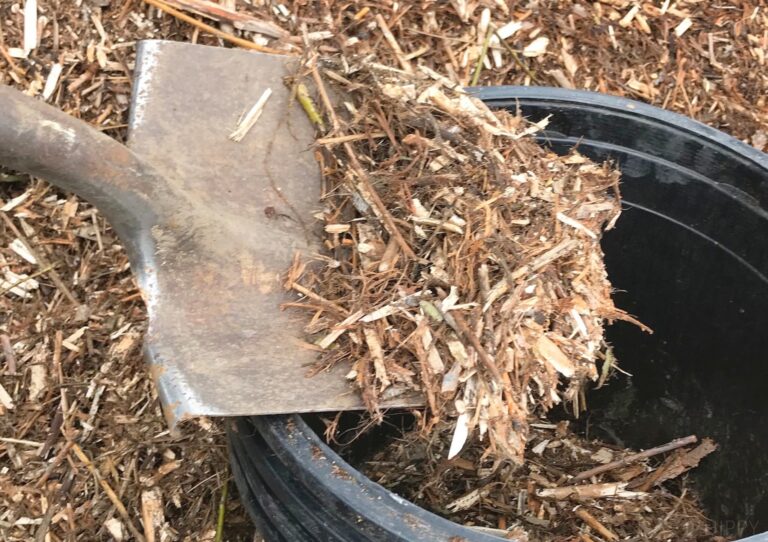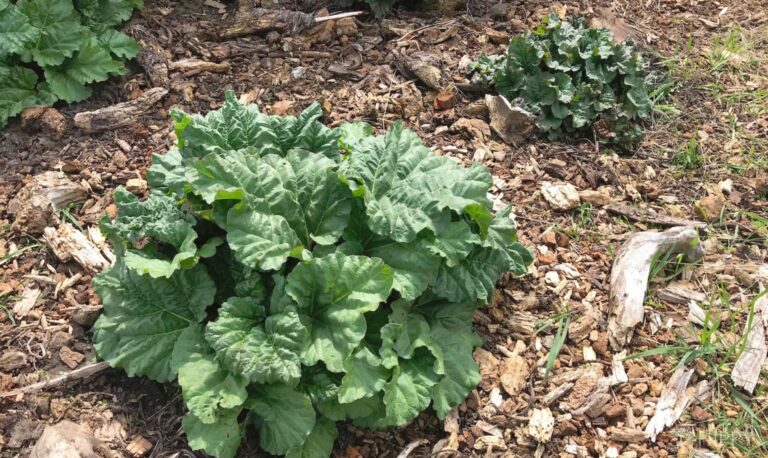Mulch is a layer of material that you spread over the surface of your soil when you want to improve fertility, reduce weed growth, improve/change the visual aesthetic, and/or to improve moisture retention.

So is woodchip mulch good for your garden?
Yes, it is. Woodchip mulch improves the overall health and moisture retention of your soil and provides insulation/protection from frost damage in the winter. The mulch particles also work as a shield against soil erosion, and reduce weeds.
Certain types of wood chips are natural pest repellents, and chips, in general, are an invitation to earthworms to come nourish the soil.
Usually, mulch is all-organic, but it can also be synthetic and when applied correctly you can improve the productivity of the soil.
As far as materials, organic mulch can be made of leaves, grass clippings, pine straw, and wood chips. So, is woodchip mulch good for your garden? Well, let’s take a look at the good, the bad, and the ugly of working with woodchip mulch.
The Good
There are numerous benefits to using woodchip mulch, these include:
- The use of woodchip mulch helps the soil to retain moisture. The moisture on the surface of the soil tends to quickly evaporate on hot days, meaning you must water your plants more often. Using woodchip mulch becomes a protective layer that helps the soil to retain much of its moisture.
- Woodchip mulch is biodegradable, and as it breaks down into the soil; its own elements add to the nutrition of the soil.
- Certain types of woodchips (pine, cedar, etc.) are natural repellents for fleas, gnats, and ticks.
- Natural insulation. The use of woodchip mulch creates a layer of insulation for your plants to reduce the shock of winter’s arrival. It keeps the soil temperature consistent and reduces frost damage.
- Weed control… yes, really. A layer of mulch at the correct depth reduces the number of weeds to worry about. This is because less sunlight reaches the weeds through the mulch.
- Prevent soil erosion. Moisture or soil movement will cause the natural particles in the mulch to lock together and form a sort of shield against soil erosion.
- Healthier soil. Using mulch prevents moisture from evaporating and provides protection from erosion. This means that the nutrients of the soil aren’t being lost and the soil becomes healthier.
- Invitation to the earthworms. Your soil’s health can be greatly improved with the aid of a few earthworms as they work to balance the nutrients in the soil.
- Aesthetically pleasing. The use of woodchips adds a unique look to your property that’s easily maintained.

The Bad
For all the positives associated with woodchip mulch, there are some negatives which I’d be remiss to ignore. The bad stuff includes:
- Increased Fungal Growth. If you’re growing a veggie garden in your backyard, woodchip mulch – or organic mulch in general – might be a bad idea. The reason for this is that the organic material, in this case the woodchips, is consumed as a nutrient by the plants and you can end up with a higher level of fungal growth in your garden.
- More compost is needed in order to maintain your carbon/nitrogen ratios. Like all plants, vegetables have a certain limit of each element that they can take, and you must keep those limits balanced. Well, adding woodchip mulch to the mix increases the level of nitrogen in the soil, which means you must add more compost/manure to increase the carbon levels and balance the proverbial scales.
- The risk of termites increases dramatically when you basically ring the dinner bell for them. Termites feed on wood, ergo woodchips would be like paradise for them – a never-ending buffet! It also, unfortunately, opens the rest of your property for them to explore which can be a big problem.
- Woodchip mulch tends to compact more often than other types of mulch. Compacted mulch can block airflow and water, leading to rot and fungal growth.
- It should come as no surprise but using woodchip mulch near your house creates a serious fire hazard. This is particularly true if you’re in a very dry climate that’s prone to fires.
- When applying woodchip mulch, you risk damaging the soil acidity for certain plants/trees. Likewise, any fungi/disease carried by a tree will be transferred to the ground if that tree is used for mulch.
- Disease/Fungal problems may arise if, when applying the mulch near trees and shrubs, it’s placed too close to the bases of the trunk. This compromises the overall health of the tree/shrub.
The Ugly
The ugly…well, this is the stuff that’s bad but not necessarily world-ending. The nit-picky irritations of working woodchip mulch if you will.
- While aesthetically pleasing, the end of the season means the woodchips/shavings have deteriorated and are not looking as nice as they had at the start of the season. You’ll have to replace them periodically to maintain the aesthetic and soil benefits they provide.
In Closing
To recap, yes, woodchip mulch is very good for your garden, but there are a few problems associated with using it. Don’t panic, just make sure to apply it correctly to the right places and you’ll be fine.
In closing, I’d like to thank you all for reading. I hope you enjoyed the article and found it informative. Take care and I’ll see you guys in the next one, Happy… erm… mulching?

Greg spent most of his childhood in camping grounds and on hiking trails. While he lives in the suburbs nowadays, Greg was raised on a small farm with chickens. He’s a decent shot with a bow, and a huge knife enthusiast. Find out more about Greg.
